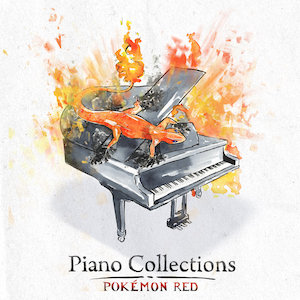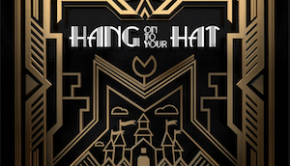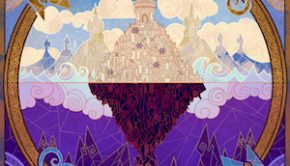Piano Collections: Pokémon Red/Blue/Yellow/Green
 |
Album Title: Piano Collections: Pokémon Red/Blue/Yellow/Green |
| Record Label: Materia Collective |
|
| Catalog No.: MCOL-0065 |
|
| Release Date: November 10, 2017 |
|
| Purchase: Buy at Bandcamp |
Overview
Piano Collections: Pokémon Red / Blue / Green / Yellow is a Kickstarted fan arrangement album of piano arrangements of music from the first generation of Pokémon games, mostly arranged and performed by Trevor Alan Gomes, with a number of guest arrangers and a few appearances by Kyle Landry. The project received much more than its initial pitch in funding, so that the album was expanded to cover most of the tracks from the games. Rather than merely transcribing the tracks, Gomes and his guests put thought and care into the arrangements, preserving the melodies while properly adapting the tracks for the piano, developing them with a variety of musical influences in the new textures and harmony. The result is a lovely take on the beloved soundtrack that fans should be sure to check out.
Body
The album begins with one of two piano duets on the album, where Gomes is joined by Kyle Landry. “Opening” makes the most of the skilled duo, sticking close to the original track but filling in the gaps with dazzling runs and other ornamental lines. It is a tad too forceful for my tastes, but that’s mostly a carry-over from the original. The better of the duo tracks for me is “Theme Song”, a piece not actually from the games but rather from the English dub of the anime series. Here the duo are much more adventurous in their arranging choices, heightening the drama of the piece by contrasting introspective and bombastic passages. There are also some great sections with jazzy flair, and the climax is well-earned. I’m glad they included it along with the game tracks, since it is so brimming with personality and surprising emotion. Landry also has a solo track, “Surf!”, which is full of embellishments along with shifts in dynamics and tempi that seem to evoke the waves of the sea itself. It’s very trademark for Landry with lots of arpeggiated chords and cascades of notes, and it works well here.
The rest of the album is Gomes playing on his own, but that hardly means that these tracks are at a disadvantage. I’ve always been enamoured with the town themes of the games, and Gomes does them justice here. “Pallet Town” is as beautiful a track as ever, and the arrangement deftly moves the melody between octaves to show different colours. The harmonic changes do a wonderful job of further sweetening the track, particularly in its middle section, and the dynamics never feel over-dramatic. Other highlights include the very warm “Pewter City”, the hazy and dream-like “Lavender Town” with its 20th-century textures, and the ragtime take on “Celadon City”, which is pulled off so well that it is a wonder that the original is not actually a ragtime piece. Related is “Game Corner”, which is actually played on an old saloon piano, comes complete with energetic thumps throughout. Another great area theme is “S.S. Anne” which begins in a very calm in a dignified manner following Junichi Masuda’s original counterpoint before blossoming into sentimental affection. Even route themes are lovingly arranged, like “Route 1” with its meticulous balancing between legato and staccato passages that capture both spritely adventure and grand sights. Some are a bit more run-of-the-mill like “Victory Road” or “Route 9”, but overall the town and area themes are wonderful, keeping the original charming melodies while expanding on their styles and ranges of emotion, with very skilled playing throughout.
Even the darker and moodier area tracks are not left out of this attention to detail, and are often more inventive. “Viridian Forest” crafts great left-hand accompaniments to the melody, while also emphasizing the rhythmic character of the track. “Mt. Moon” is a sparse arrangement full of mystery and wonder, with the repetitive melody used like a key to the puzzle of strange musical figures that surround it. “Silph Co.” is another highlight, with many textural changes used to emphasize the tempo changes of the original. Then there are the dextrous “Team Rocket Hideout” and “Pokémon Mansion”, in which Gomes handles the chaotic passages with clarity and precision. I would have loved to see more with “Pokémon Mansion” in particular (seems like a track that would have been perfect as a duet), but it, and the other tracks here, are great nonetheless.
Also included as many event and one-off themes, though most of these are less remarkable, which is understandable given how underdeveloped or simplistic the originals were. Gomes puts as much life and jazz as he can into “A Rival Appears!”, but its core melody simply isn’t strong enough to sustain it. The “Professor Oak Suite” is similar to some of the town themes, but can’t quite match them either since it naturally lacks their charm. The ending “Hall of Fame” and “~Ending~” also fail to leave much of an impression, which is a bit of a letdown given what came before. But some tracks here are still very inspired in their arrangement, notably a few very short tracks that get interesting expansions. “Poké Flute” for example is transformed from its simple original into a track filled with ambiguous chords and a subtle resolution. “Evolution” steadily builds on its basic original pattern, and doesn’t exactly pay off, but still manages to capture the attention over its short runtime. The closing track “Jigglypuff’s Lullaby” is another album highlight, unexpectedly turning its short melody into a beautiful romantic ballad.
The album of course also covers the battle themes of the games, and the arrangements push Gomes to his limits. Battle themes are always tricky to arrange for piano, since the originals are often rock pieces that don’t easily lend themselves to pianistic arrangements, so that they often result in repetitive bass octaves and a lot of banging of basic chords with no subtlety. Gomes does his best to avoid this, in for example making good use of the oscillating undercurrent of both “Battle! Wild Pokémon” and “Battle! Gym Leader”. Later on, “Battle! Pokémon Trainer” has a great low bassline of bubbling tension, as well as a fair amount of dissonance that leads to an incredible conclusion. “Battle! Rival” is another feat of dexterity. The original is interesting and unique in that it mostly avoids actual bass notes, and I would have loved to see the arrangement take after this, but unfortunately it is a bit conventionalized here, though that doesn’t detract from its being the strong climax for the album.
Summary
Piano Collections: Pokémon Red / Blue / Green / Yellow is a wonderful arrangement album that successfully fuses different styles and influences with the soundtrack of the first Pokémon games. The tracks are performed well, with both technical skill and emotional sensitivity on display throughout. None of the tracks are bad, although a number of them don’t stand out next to the stronger material. But as much as Gomes and his collaborators try to elevate the source material, there is a certain inescapable simplicity and slightness to the songs, which works in their favour in terms of their charm, but works against them in terms the mature tone and musical complexity that the project is going for. Still, there is a wealth of enjoyable and high-quality material here that stands above many other fan-projects. Given the low price of the album, fans of the music ought to check this album out. It’s just a shame that the sheet music isn’t being sold.
Do you agree with the review and score? Let us know in the comments below!
4
Posted on April 6, 2020 by Tien Hoang. Last modified on April 6, 2020.














